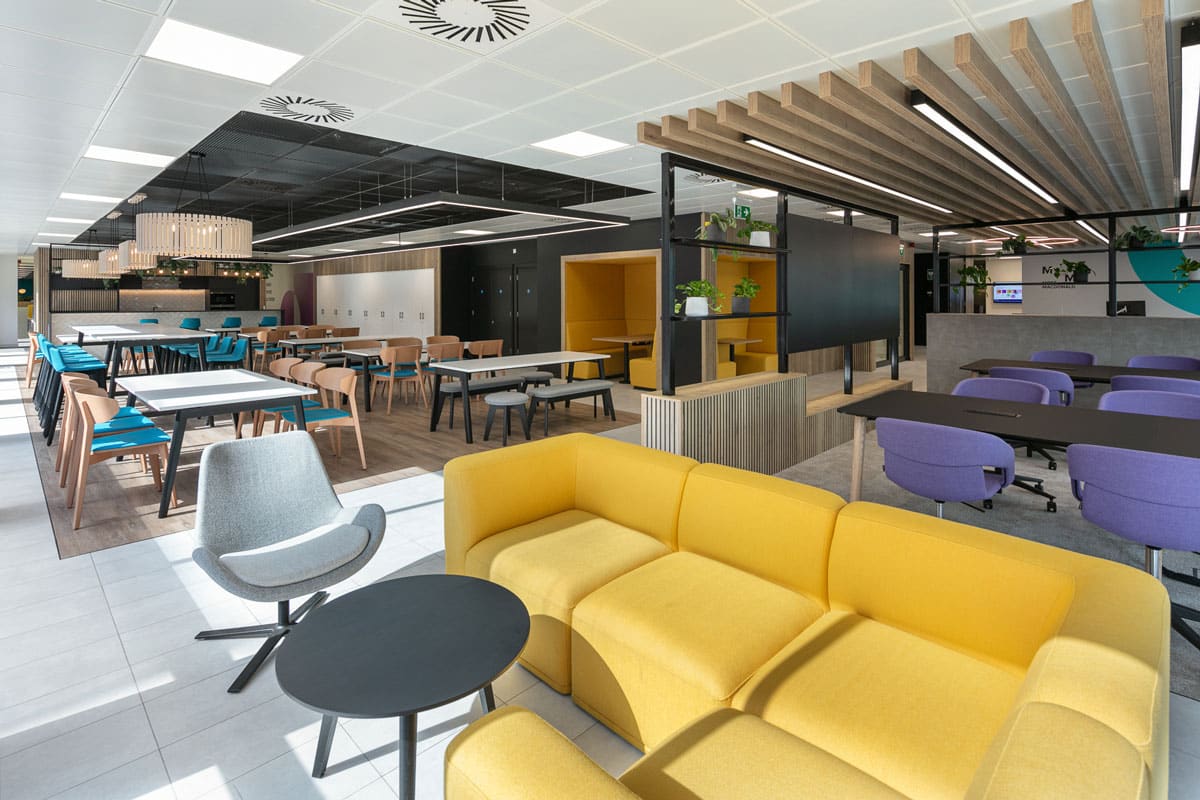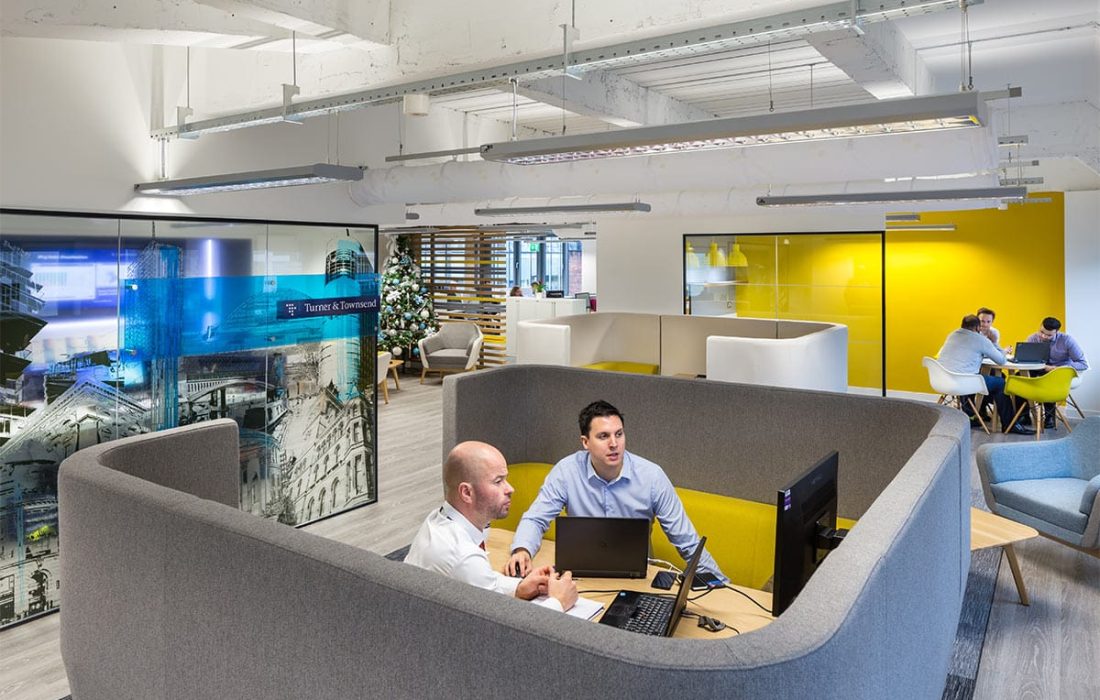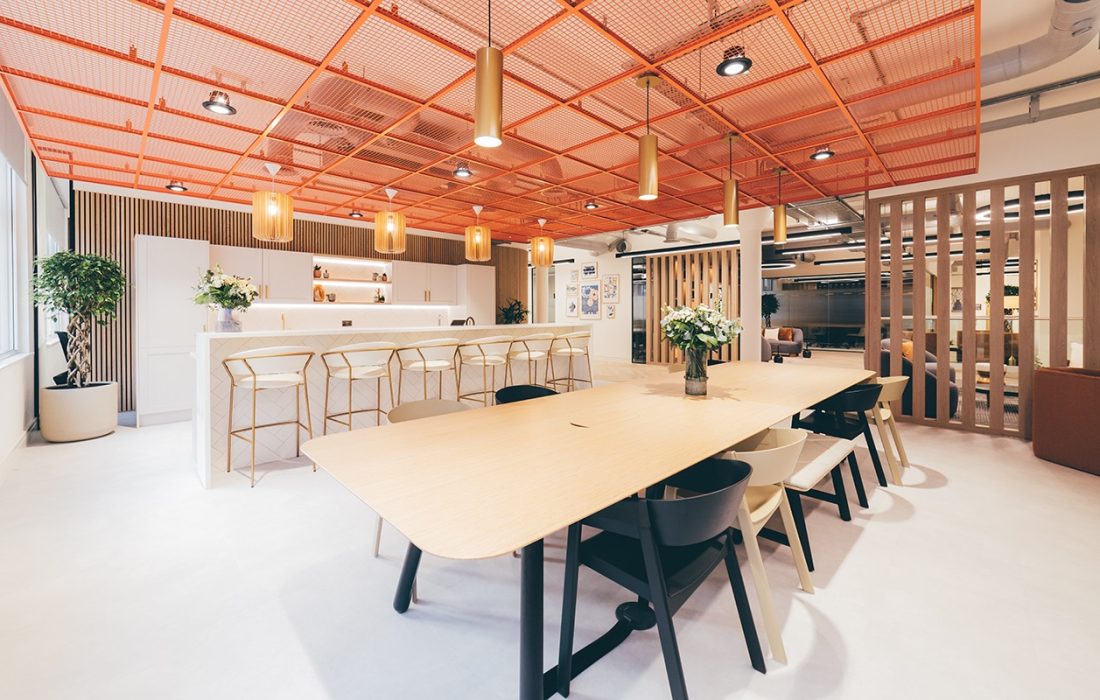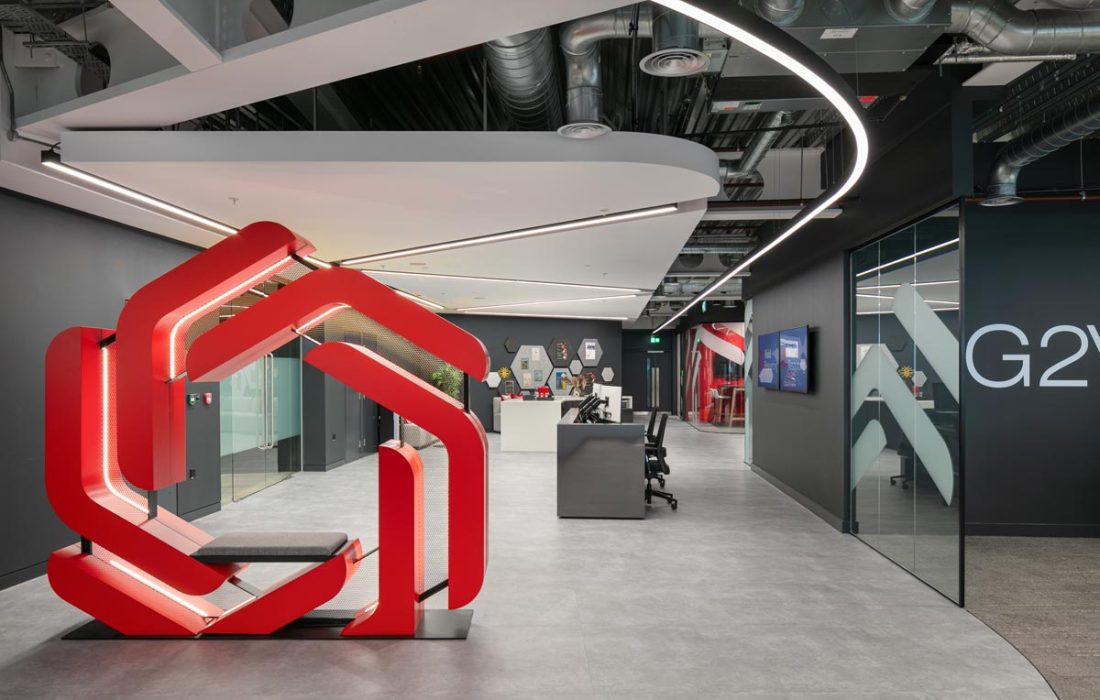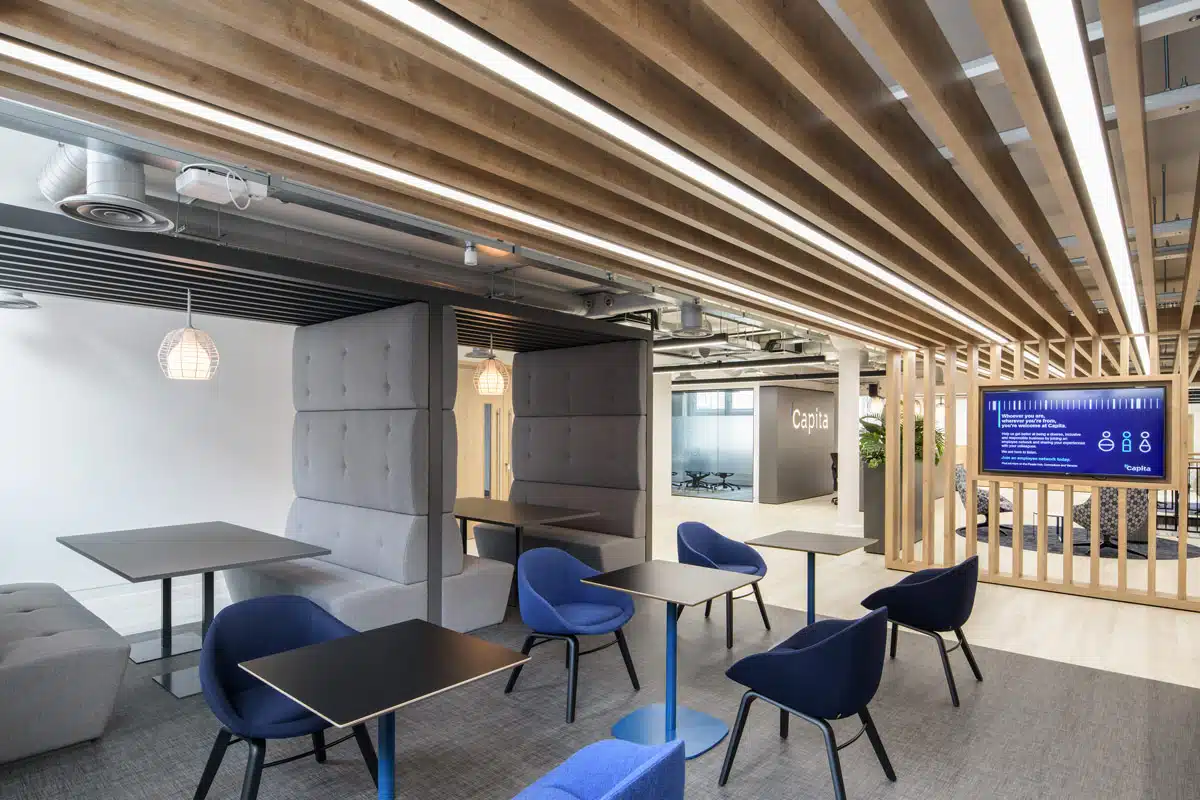Designing for Mentorship and Informal Learning
Mentoring is one of the most effective ways to transfer knowledge within a business. However, this type of learning often happens organically, outside formal training sessions. That’s where office design can make all the difference.
Open-plan layouts with strategically placed breakout spaces can help foster these informal learning moments. When junior staff are seated near senior team members, conversations flow more freely, and opportunities to ask questions become more frequent. Soft seating zones, small meeting booths, or semi-private pods allow mentors and mentees to hold meaningful, uninterrupted conversations without the need to book a boardroom.
Creating Spaces for Team Growth
Office environments that prioritise collaboration naturally support professional development. Shared project zones and adaptable team areas can boost peer-to-peer learning and promote the sharing of ideas.
Modular furniture and flexible spaces are particularly useful in supporting evolving team structures. Whether you’re running a design sprint, training a new cohort, or hosting a brainstorming session, the ability to reshape a space quickly allows the environment to adapt to learning needs – not the other way around.
Supporting Workshops and Training Sessions
Training is no longer limited to occasional seminars or classroom-style settings. Many companies are now investing in dedicated learning zones as part of their office fit-outs.
These purpose-built rooms are often equipped with writable walls, AV tools, and modular seating arrangements, making them ideal for interactive workshops or team-wide development days. Acoustic treatment is another vital consideration, ensuring the space supports focus and prevents disruption to neighbouring teams.
Even if a business doesn’t have the square footage for a separate training suite, design features such as movable walls, retractable dividers, or tech-enabled meeting rooms can help integrate learning into the everyday environment.
Psychological Safety and Growth
A culture of learning only thrives where employees feel safe to ask questions, try new things, and sometimes fail. The physical environment can encourage this mindset.
Design choices like soft textures, warm lighting, and plants contribute to a psychologically safe space. Likewise, incorporating inclusive design features – such as gender-neutral facilities, accessible layouts, and wellness rooms – reinforces the message that every employee is valued, supported, and encouraged to grow.
Technology as a Learning Enabler
Digital learning tools, from video conferencing software to knowledge-sharing platforms, are central to modern development strategies. Office spaces should be designed to support seamless access to these platforms.
Strong Wi-Fi, integrated AV setups, and multiple power points are a given. But successful office design goes further – including quiet focus zones for on-demand e-learning and open collaboration hubs for group sessions or virtual workshops.
Reflecting Culture Through Design
Ultimately, a workplace that invests in learning sends a strong message about its culture. Whether it’s a visible learning wall showcasing internal development programmes, or branding that celebrates employee milestones, the design of the office can make learning a visible, celebrated part of daily working life.
It also helps attract and retain top talent. Today’s professionals value companies that invest in their growth. By showcasing a culture of learning through thoughtful office design, businesses can position themselves as progressive, people-centred, and future-ready.

